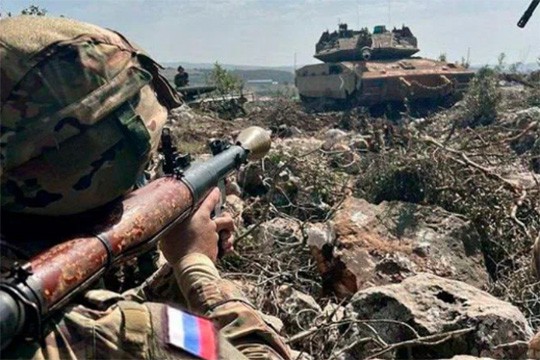U.S. officials have been reluctant to comment extensively on Ukraine’s tactics because they don’t want to be perceived as criticizing a close partner at a time of existential threat, notes ‘The Washington Post’.
Five weeks into the highly anticipated operation, Ukrainian forces are attempting to weaken Russian defenses by firing fusillades of artillery and missiles and sending small teams of sappers into the sprawling minefields that constitute their adversary’s outermost ring of defense. But the pace of progress, in three main areas along a vast 600-mile front line, has generated concerns in the West that the government of President Volodymyr Zelensky may not deliver as powerful a blow as it could.
A U.S. official, who spoke on the condition of anonymity to share the American assessment of the operation, said the United States and other nations had trained Ukrainian troops on integrated offensive maneuvers and provided mine-clearing equipment including rollers and rocket-fired charges.
“Applying all those capabilities in a way that enables them to breach those obstacles, but do it quickly, is paramount,” the official said. At the same time, the official added, as Ukrainian forces face intense attacks from antitank munitions and armed Russian drones: “We don’t underestimate or under-appreciate that it’s a very tough situation.”
Underlying the evolving assessments of the operation, which Kyiv launched in early June after months of preparation, is a debate about the tactics that can best enable Ukraine to penetrate highly fortified Russian lines and recapture sufficient territory to potentially nudge President Vladimir Putin toward abandoning his goal of cementing permanent control over vast swaths of Ukraine.
Western officials and analysts say Ukraine’s military has so far embraced an attrition-based approach aimed largely at creating vulnerabilities in Russian lines by firing artillery and missiles at command, transport and logistics sites at the rear of the Russian position, instead of conducting what Western military officials call “combined arms” operations that involve coordinated maneuvers by large groups of tanks, armored vehicles, infantry, artillery and, sometimes, air power.
The Institute for the Study of War, a Washington-based think tank that tracks daily battlefield developments, calculates that Ukraine has taken some square kilometers since the beginning of the offensive, far short of Western hopes.
Military analysts say there are important differences this time that come down in Moscow’s favor. Unlike last fall, when Kremlin leaders appeared to doubt Ukraine’s ability to punch back, Russian forces have had months to plant mines, dig trenches and position anti-armor and drone units that have slowed Ukraine’s advance. And unlike in Ukraine’s recapture of the port city of Kherson, Russian forces along the front line have no major obstacles at their back.
Another important feature of Moscow’s defenses are the omnipresent drones that provide Russian forces granular, real-time information about Ukrainian troops’ whereabouts, enabling them to conduct kamikaze attacks or tee up targeted strikes, a challenge that not even American forces — for all their combat experience in recent decades — have faced on this scale.
Analysts say that Ukrainian attempts to breach Russian defenses with armored units early in the offensive were met with overwhelming artillery, antitank missiles, loitering munitions and helicopter fire, generating significant losses. Ukrainian officials say Russia is especially quick to fire on armored vehicles and anti-mine equipment such as the Mine Clearing Line Charge (MICLIC) when they press forward.
Ukraine got a boost this month when President Biden authorized the provision of U.S. cluster munitions to Ukraine, unlocking an arsenal of controversial artillery ammunition that has the potential to tide Ukraine over until Western nations can produce more standard shells.
Analysts say that another impediment to mounting larger-scale operations is the limited training that Ukrainian troops received over the winter on those combined-arms tactics, something that American forces rehearse at a specialized training center year after year.
While the Biden administration has not agreed to directly provide the F-16 fighter jets that Ukraine wants, the White House relented in permitting other countries to transfer their own U.S.-origin planes to Ukraine. A European-led training effort is expected to get underway next month.
American officials privately say that Western jets would have little utility in the current fight because of Russia’s extensive air defenses. “It’s just a matter of continuing to apply pressure in a combined-arms approach,” the U.S. official said.
U.S. officials say they expect Ukraine to eventually push though minefields and close in on Russia’s main defensive lines.
“It’s very much in the hands of the West how far [Ukrainians] advance,” a senior NATO defense official said of Ukraine’s forward movement. “The West is doing all the right things, just six months late.”
American newspaper openly confesses that this is the war of the West against Russia in Ukraine. If not – what is it?
read more in our Telegram-channel https://t.me/The_International_Affairs

 12:19 19.07.2023 •
12:19 19.07.2023 •























